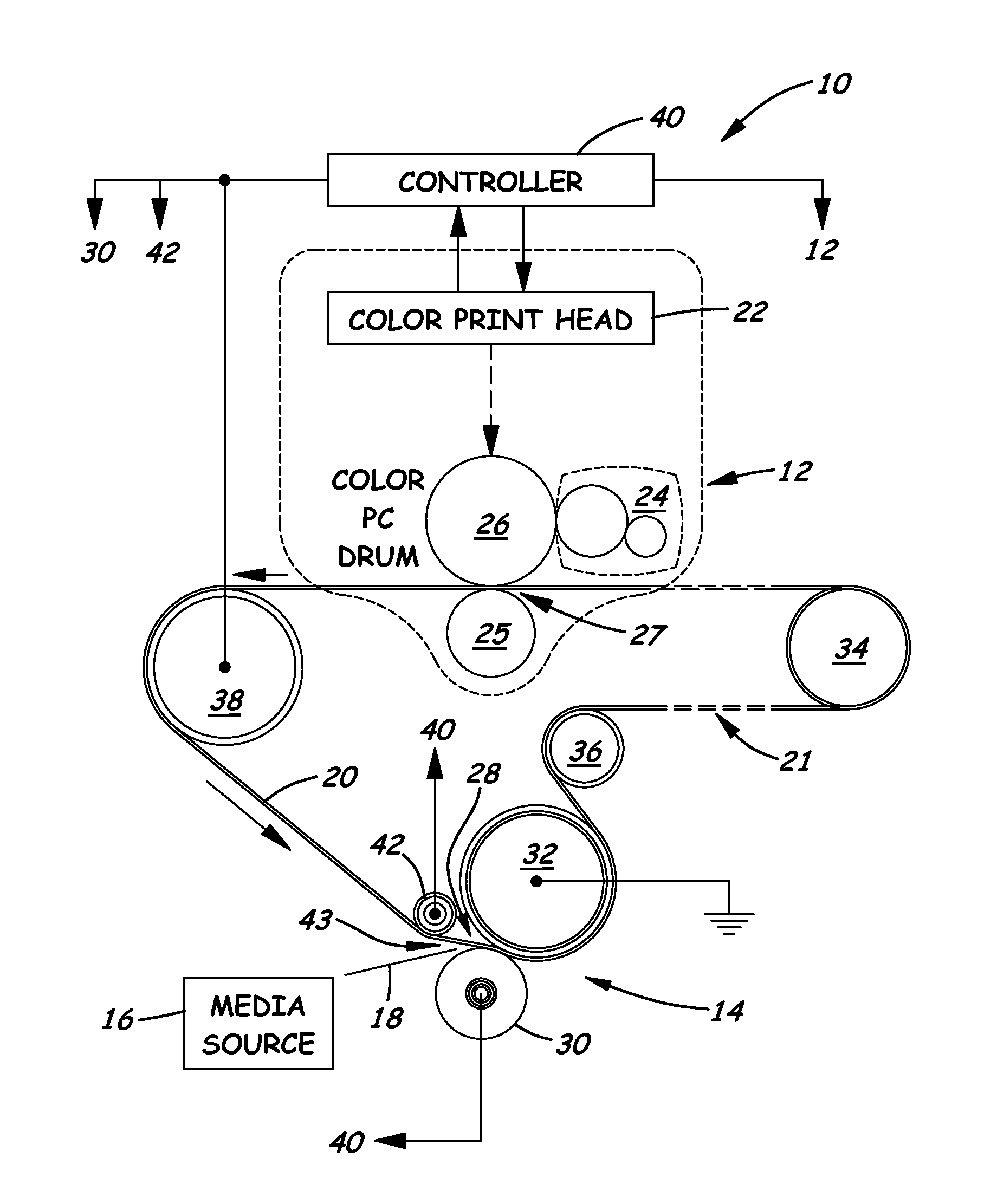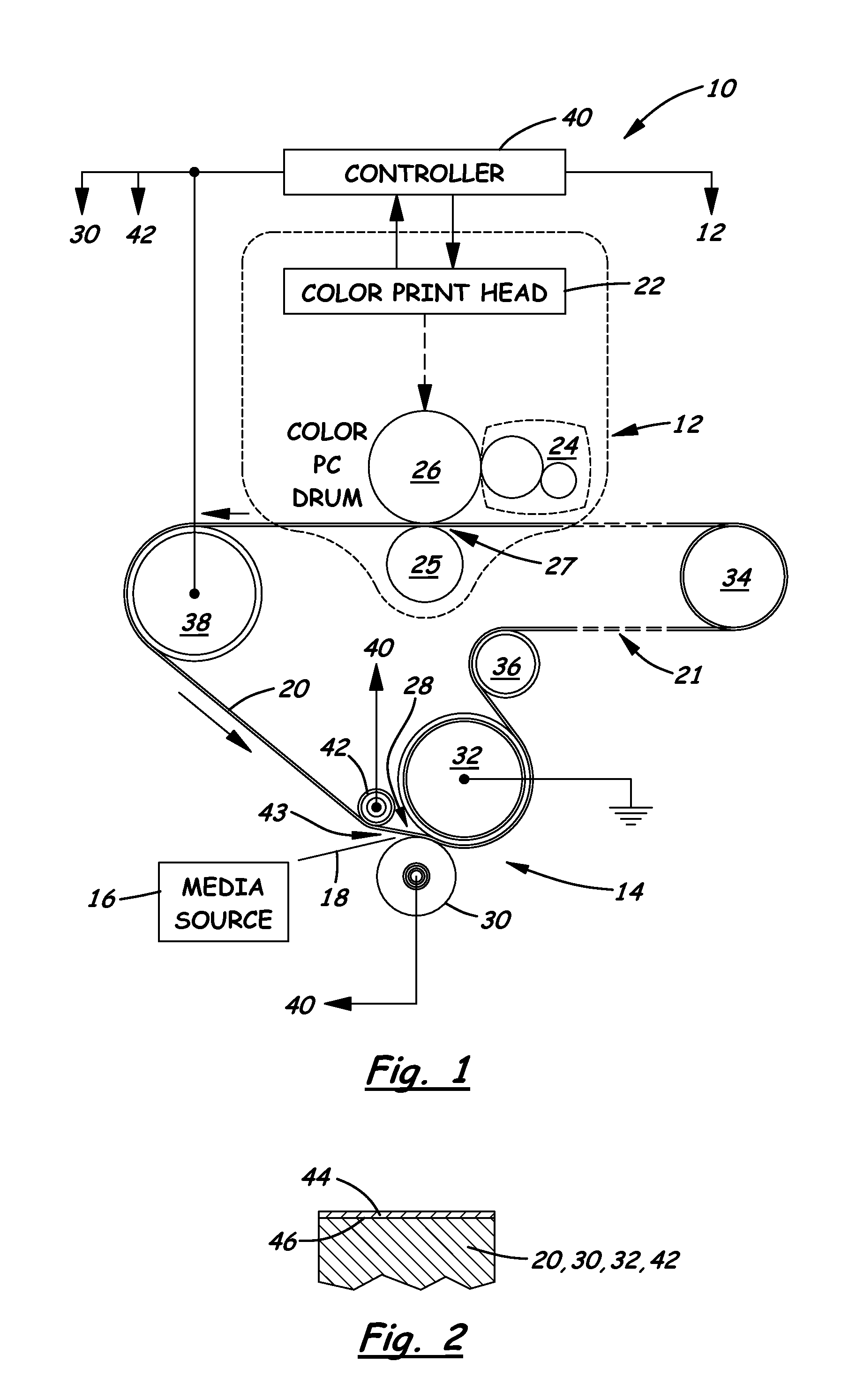Method for Enlarging Toner Transfer Window in EP Imaging Device and Transfer Station Employing the Method
a technology of ep imaging and toner transfer, which is applied in the direction of electrographic process apparatus, instruments, optics, etc., can solve the problems of inability to achieve print artifacts, inability to achieve future transfer steps, and almost always breakdown, so as to improve overtransfer performance and prevent premature paschen breakdown , the effect of high dielectric breakdown strength
- Summary
- Abstract
- Description
- Claims
- Application Information
AI Technical Summary
Benefits of technology
Problems solved by technology
Method used
Image
Examples
Embodiment Construction
[0017]The present invention now will be described more fully hereinafter with reference to the accompanying drawings, in which some, but not all embodiments of the invention are shown. Indeed, the invention may be embodied in many different forms and should not be construed as limited to the embodiments set forth herein; rather, these embodiments are provided so that this disclosure will satisfy applicable legal requirements. Like numerals refer to like elements throughout the views.
[0018]Referring to FIG. 1, there is schematically illustrated in simplified form an exemplary embodiment of a color EP imaging device 10 to which the present invention may be applied. The imaging device 10 is a two transfer system which includes, in part, a plurality of first transfer color imaging forming stations 12 (only one being shown), a second transfer station 14, a media source 16 for feeding one at a time a media sheet 18 of paper, for instance, to the second transfer station 14, and an intermed...
PUM
 Login to View More
Login to View More Abstract
Description
Claims
Application Information
 Login to View More
Login to View More - R&D
- Intellectual Property
- Life Sciences
- Materials
- Tech Scout
- Unparalleled Data Quality
- Higher Quality Content
- 60% Fewer Hallucinations
Browse by: Latest US Patents, China's latest patents, Technical Efficacy Thesaurus, Application Domain, Technology Topic, Popular Technical Reports.
© 2025 PatSnap. All rights reserved.Legal|Privacy policy|Modern Slavery Act Transparency Statement|Sitemap|About US| Contact US: help@patsnap.com


